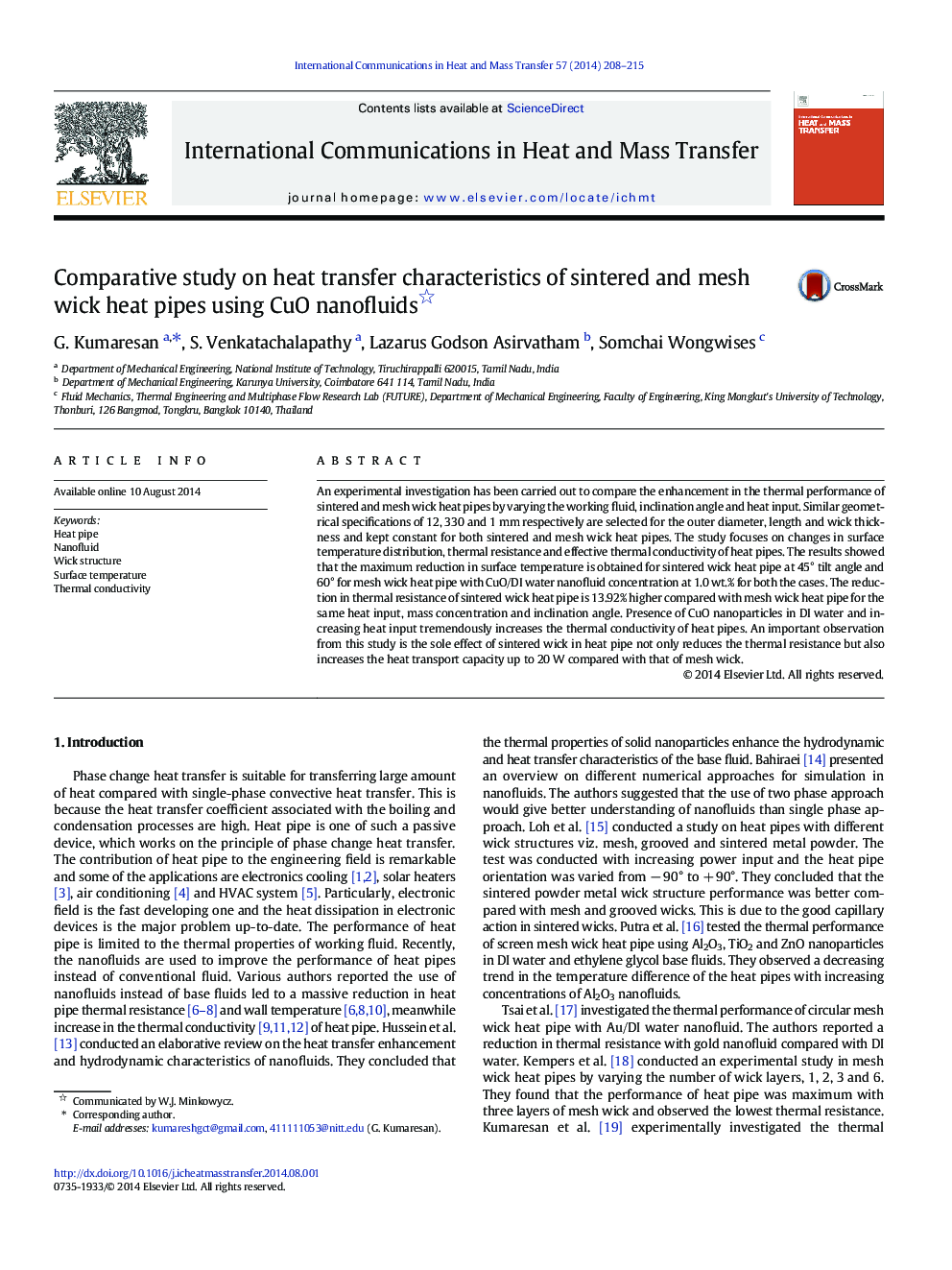| Article ID | Journal | Published Year | Pages | File Type |
|---|---|---|---|---|
| 653176 | International Communications in Heat and Mass Transfer | 2014 | 8 Pages |
Abstract
An experimental investigation has been carried out to compare the enhancement in the thermal performance of sintered and mesh wick heat pipes by varying the working fluid, inclination angle and heat input. Similar geometrical specifications of 12, 330 and 1 mm respectively are selected for the outer diameter, length and wick thickness and kept constant for both sintered and mesh wick heat pipes. The study focuses on changes in surface temperature distribution, thermal resistance and effective thermal conductivity of heat pipes. The results showed that the maximum reduction in surface temperature is obtained for sintered wick heat pipe at 45° tilt angle and 60° for mesh wick heat pipe with CuO/DI water nanofluid concentration at 1.0 wt.% for both the cases. The reduction in thermal resistance of sintered wick heat pipe is 13.92% higher compared with mesh wick heat pipe for the same heat input, mass concentration and inclination angle. Presence of CuO nanoparticles in DI water and increasing heat input tremendously increases the thermal conductivity of heat pipes. An important observation from this study is the sole effect of sintered wick in heat pipe not only reduces the thermal resistance but also increases the heat transport capacity up to 20 W compared with that of mesh wick.
Related Topics
Physical Sciences and Engineering
Chemical Engineering
Fluid Flow and Transfer Processes
Authors
G. Kumaresan, S. Venkatachalapathy, Lazarus Godson Asirvatham, Somchai Wongwises,
